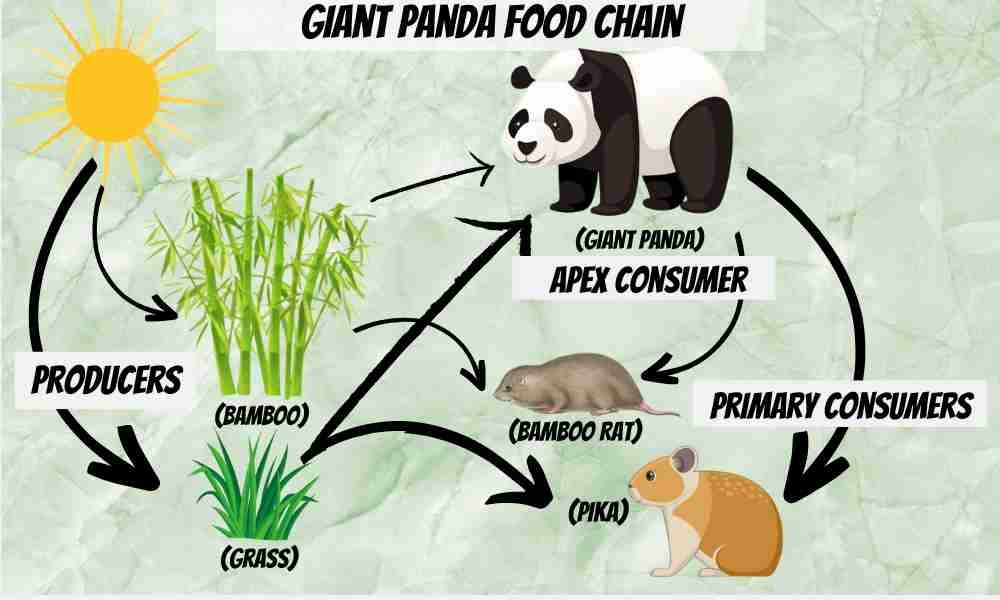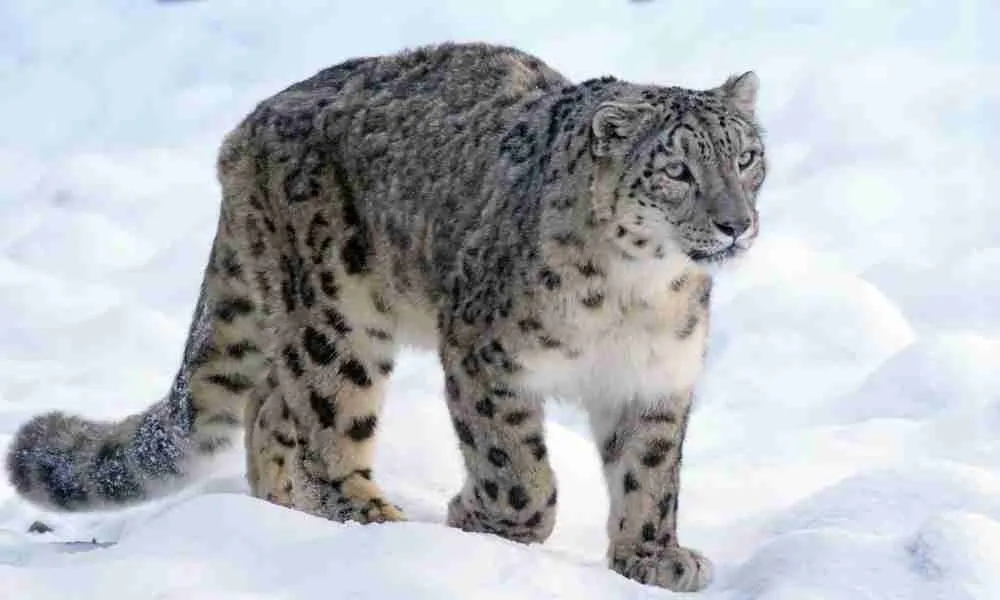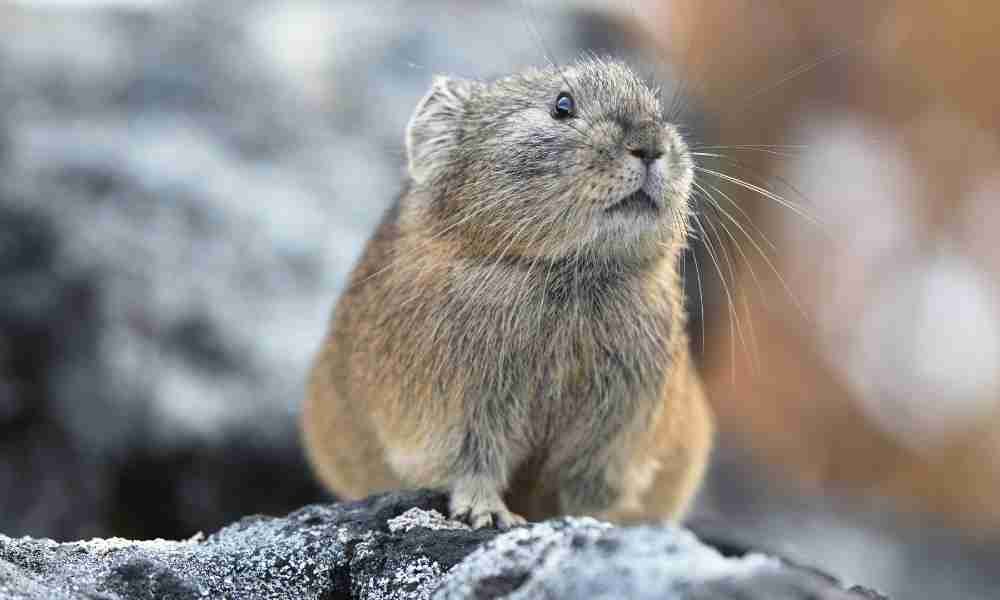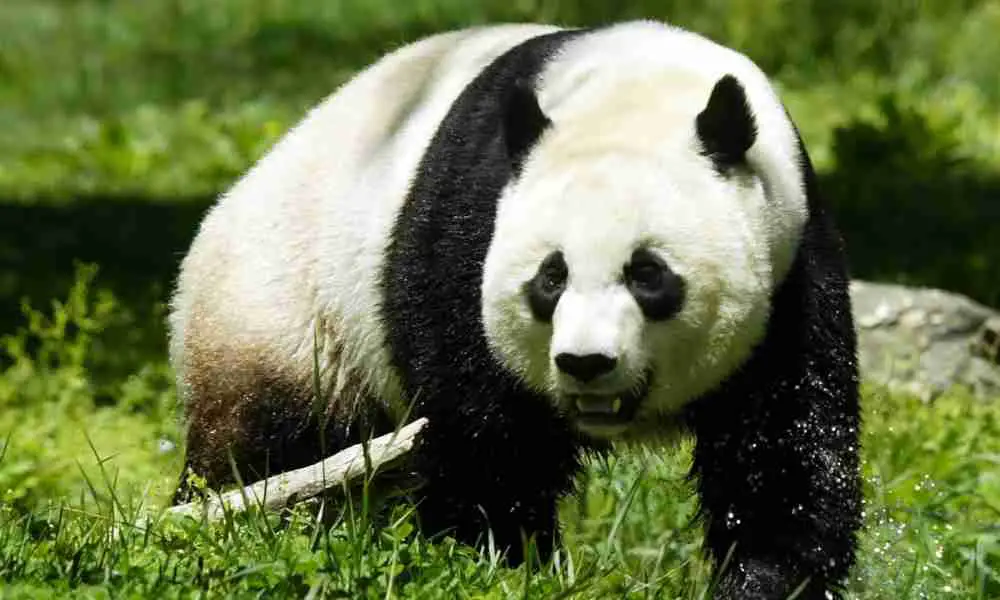Giant pandas are also considered bears. And just like other bears, you might want to know if they are apex predators too.
Here’s a quick answer:
Yes! Giant pandas are apex predators. They are at the top of their food chain and are the largest carnivores in their ecosystem.
Additionally, giant pandas, particularly adult ones, do not have natural predators in their environment.
Now you know pandas are apex predators. But to make this clearer, we’ll be discussing briefly about apex predators. This way, you will understand why pandas are included in this category.
Keep reading below!
What are Apex Predators?
Apex predators are animals that are at the top of their food chain and have no natural predators. They are important for controlling the populations of other animals.
In addition to this, they prevent one species from dominating the environment. This way, they help to maintain a healthy balance in the ecosystem.
These predators are usually carnivores and are known for their strength and agility. It helps them hunt and capture prey in their environment without much struggle.
In addition, apex predators are normally bigger and more powerful than normal predators. They also have sharp teeth and strong jaws compared to that of any creature in their environment.
Giant pandas are not effective hunters and rarely eat meat. Still, they are considered apex predators.
So the question now is why? Let’s look at the reasons below.
5 Reasons Why Giant Pandas Are Considered Apex Predators
Giant Pandas are Large Creatures

Giant pandas are large animals usually weighing between 220 – 330 lbs (100 – 150 kg). This kind of size is much expected of a member of the bear family.
However, their size gives them a great advantage when hunting their prey. It also makes them less exposed to predation.
They are Powerful Creatures
Giant pandas are not just large, but also incredibly strong! They have an impressive bite force of up to 2603N, which is enough to break any animal’s bones!
Studies have shown that pandas are the fifth strongest carnivores on the planet, so no creature dares to mess with them.
Moreover, their powerful jaws and claws give them an upper hand over their prey, as they can easily tear through any animal they catch.
A common display of their amazing strength is when they snap giant bamboo stems in half. That’s tough, but giant pandas make it look easy!
Their Teeth are Suitable For Hunting and Killing Their Prey
Giant pandas have developed a unique set of teeth perfect for eating bamboo. But, as natural carnivores, they generally have sharp canines and a deadly teeth structure.
Their canines might not be as long and sharp as other bears, but they still rip flesh apart.
Pandas have Sharp Claws
Aside from the giant pandas’ teeth, they have long, sharp claws that they use for digging and climbing trees.
Just like other bears, these claws are one of giant pandas’ deadly weapons against enemies in their habitat.
They are Super Intelligent
Giant pandas are one of the most intelligent creatures on earth. They are much smarter than we believe. Recent studies have shown that their intelligence is almost equivalent to that of a human.
These creatures are so quick and accurate in their responses that they can solve complex problems.
Such intelligence sets them on a level above other creatures in their region or ecosystem.
INTERESTING READ: WHY ARE PANDAS CONSIDERED DUMB ANIMALS?
Giant Panda Food Chain – Diagram

What Predator Eats Giant Pandas?
Although giant pandas are at the top of their food chain, they can still be eaten by predators. Adult giant pandas are quite large and strong, so they are generally not preyed upon.
However, their cubs are usually at risk of predation. Here are a few predators that eat giant pandas:
Snow Leopard

Snow leopards are big cats that live in the Himalayan Mountains and the regions around them. They don’t usually hunt giant pandas, but they may do so if the opportunity arises.
This is especially true in winter months when pandas are forced to leave bamboo forests in search of food.
Young and sick pandas are usually the target prey because they are easier for snow leopards to catch and kill.
Yellow-Throated Martens
Yellow-throated martens are predators found in Southern Asia. They are small, weasel-like animals famous for their violent looks and ambush characteristics.
These creatures often attack panda cubs that are not well hidden. According to “Animal Conservation Journal”, yellow-throated martens are a major cause of pandas’ death in the wild.
Greater Spotted Eagles
Greater spotted eagles are large birds found in Europe, Africa, and Asia. They usually hunt small mammals like rabbits and squirrels.
However, they are also known to attack panda cubs since they are so small and unprotected. If a greater spotted eagle gets the chance to attack a panda cub, it will do so. However, this is not a common occurrence.
Feral dogs
Feral dogs are wild dog species found on every continent except Antarctica. They are opportunistic feeders who will eat whatever they catch, including young pandas.
They are a threat in many countries, including China, where giant pandas live.
Take Note:
Humans are the biggest threat to giant pandas even though they are not their natural predators. The unlawful hunting of giant pandas by humans for their hides and coats is a major issue for the pandas’ population.
In addition, human activities such as deforestation and land encroachment are also to be blamed for the decreasing number of giant pandas.
RECOMMENDED READING: WHAT ARE PANDAS PREDATORS?
What is Giant Pandas’ Prey?
Giant pandas have a broad diet including plants and meat. They occasionally prey on small animals, but they are top predators of bamboo.
So plants make up the most part of their diet. Let’s look at the kinds of plants and meat they eat:
Plants

- Bamboo – Pandas depend heavily on bamboo as their primary source of food. They eat the shoots, leaves, and stems of the plant.
- Grasses – Giant pandas will occasionally eat grasses during winter when bamboo is not readily available. However, grasses are not as nutritious as bamboo.
- Fruits – Pandas sometimes snack on fruits like berries and apples. Although they are a good source of vitamins and minerals, they are not a major component of a panda’s diet.
Animals

- Civets
- Pikas
- Fishes
- Carrion
- Rodents
- Insects – Pandas sometimes prey on insects like ants and termites for a protein boost. However, these insects are not a major component of their diet.
Giant Pandas Predation – Active or Opportunistic?
Giant pandas are opportunistic feeders. They mostly eat plants but have been known to prey on small animals on rare occasions.
Pandas will take advantage of the opportunity to eat meat if it is available, but it does not actively search for prey.
This is different from active predation, which is when an animal actively hunts for prey and makes it a regular part of its diet.
Unfortunately, giant pandas are bad at catching or killing small animals. They are slow and clumsy! As a result, they can only catch animals that are not very fast or agile.
Do Giant Pandas Ever Hunt?
Yes, pandas hunt but on rare occasions. While they are mostly vegetarian, they will occasionally hunt for pikas and other small mammals.
However, pandas are not active hunters. They are slow and clumsy, thus, meat does not make up a great percentage of their diet. They only make use of opportunities when they present themselves.
Can Pandas Fight Off Predators?
Yes, pandas can defend themselves against predators.
They are usually gentle animals that will not look for a fight, even with other pandas. But if they are threatened, they will act aggressively to protect themselves or their babies.
Pandas are bears which explains why they are super strong with sharp claws and powerful teeth. And when it’s time to fight for survival, they bring out that aggressive bear nature in them.
Related Questions:
Are Black Bears Apex Predators?
Yes, black bears are apex predators. It means that they are at the top of the food chain in their environment and have no natural predators.
These bears are well adaptable and can survive in a variety of habitats, making them masters of their environment.
Black bears are large and powerful animals, and they can hunt a variety of animals, such as deer, elk, and small mammals.
Are Brown Bears Apex Predators?
Yes, brown bears are apex predators and are at the top of the food chain.
They are famous for their hunting skills and can take down large prey such as moose and caribou, as well as smaller creatures like fish, rodents, and birds.
Brown bears play a critical role in their ecosystem and have a significant impact on the populations of other animals and the overall health of their habitat.
Are Polar Bears Apex Predators?
Yes, Polar bears are apex predators occupying the top of the Arctic food chain. They are the largest land predators without any natural predators.
They are well known for their hunting skills, sharp teeth, and powerful jaws. In addition, they prefer to prey on large animals like seals and whales.
Are Sloth Bears Apex Predators?
Yes, sloth bears are apex predators as they also stay at the top of their food chain.
These bears will kill and eat animals such as rodents, birds, and carrion, even though their main diet consists of ants and other insects.
Similar to other bears, they have powerful jaws and teeth that are perfect for crushing the bones of their prey.
They are a critical part of their environment, helping to keep the populations of plants and insects in check.
Recap
In summary, giant pandas are apex predators. They are at the top of their food chain and have no natural predators. Remember, they are also considered apex predators for the following reasons:
- Their large size helps them hunt down their prey and be less vulnerable to predation.
- Giant pandas are incredibly strong with powerful jaws and deadly bite force.
- They are very smart and intelligent animals which is expected of creatures that stay on top of their food chain.
- Giant pandas also have long and sharp claws strong enough to tear any animal they catch.
Nevertheless, young giant pandas get hunted by predators such as snow Leopards, yellow-throated martens, wild dogs, etc. Funny enough, these predators don’t mess with the adults.
Giant pandas love to eat, no wonder they are superheroes in their food chain. But, why don’t they eat meat despite being apex predators?
Read our article ‘’ Why Pandas Don’t Eat Meat Anymore? ’’ to find out more.
Sources:

